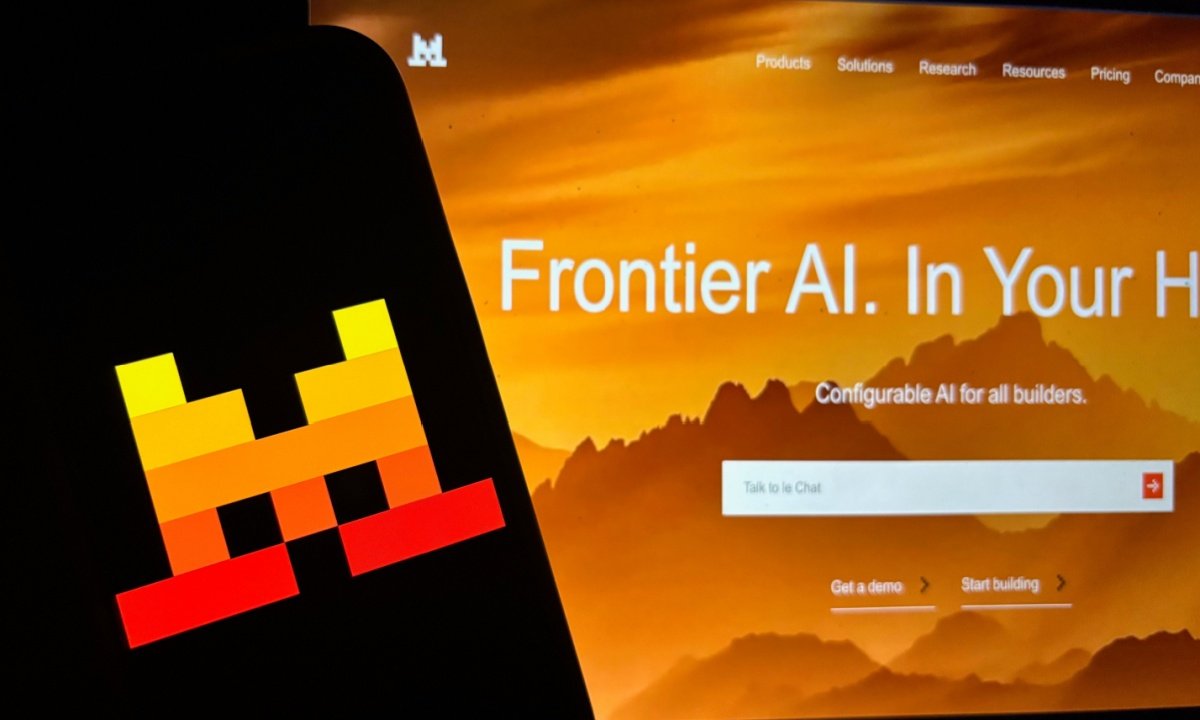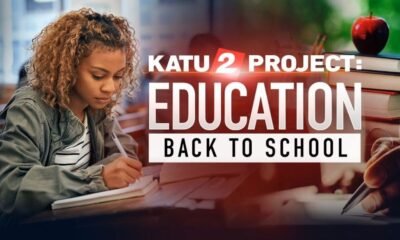AI Research
Nvidia China H20 chips
Photo illustration of Nvidia’s H20 chip.
Vcg | Visual China Group | Getty Images
Chip giant Nvidia pushed back Sunday in response to allegations from Chinese state media that its H20 artificial intelligence chips are a national security risk for China.
Earlier in the day, Reuters reported Yuyuan Tantian, an account affiliated with Chinese state broadcaster CCTV, said in an article published on WeChat that the Nvidia H20 chips are not technologically advanced or environmentally friendly.
“When a type of chip is neither environmentally friendly, nor advanced, nor safe, as consumers, we certainly have the option not to buy it,” the Yuyuan Tantian article reportedly said, adding that the article said chips could achieve functions including “remote shutdown” through a hardware “backdoor.”
In response, a Nvidia spokesperson told CNBC that “cybersecurity is critically important to us. NVIDIA does not have ‘backdoors’ in our chips that would give anyone a remote way to access or control them.”
Nvidia on Tuesday similarly rejected Chinese accusations that its AI chips include a hardware function that could remotely deactivate the chips, also known as a “kill switch.”
Tensions between the U.S. and China on semiconductor export controls have escalated in recent weeks, even after Nvidia resumed sales of its H20 chip to China. Chinese state media has framed the H20 chip as inferior and dangerous compared to Nvidia’s other chips, while the company has defended its chips.
The company’s resumption of its H20 shipments reversed a previous ban on H20 sales that was placed in April by the Trump administration. Nvidia’s H20 chips — a less-advanced semiconductor compared to its flagship H100 and B100 chips, for example — were developed by Nvidia for the Chinese market after initial export restrictions on advanced AI chips in late 2023.
U.S. export controls on some Nvidia chips are rooted in national security concerns that Beijing could use the more advanced chips to gain an advantage broadly in AI, as well as in its military applications.
Nvidia stock over the past year.
Chinese officials, meanwhile, are pushing for the U.S. to ease export controls on high-bandwidth memory chips as part of a trade deal before a possible summit between U.S. President Donald Trump and Chinese President Xi Jinping, the Financial Times reported on Sunday, citing people familiar with the matter.
Nvidia CEO Jensen Huang has supported Trump’s policies while also lobbying for export licenses for the H20 AI chip. Huang has said he wants Nvidia to ship more advanced chips to China, underscoring his outspoken stance that Nvidia’s chips becoming the global standard for AI computing is ultimately better for the U.S. to retain market dominance and influence over global AI development.
China is among Nvidia’s largest markets. Nvidia took a $4.5 billion writedown on its unsold H20 inventory in May and has warned that its topline guidance for the July quarter would have been higher by $8 billion without the chip export restrictions.
Nvidia shares were up 1% to close at $182.70 on Friday and are up 36% this year.
AI Research
AI to reshape India’s roads? Artificial intelligence can take the wheel to fix highways before they break, ETInfra

In India, a pothole is rarely just a pothole. It is a metaphor, a mood and sometimes, a meme. It is the reason your cab driver mutters about karma and your startup founder misses a pitch meeting because the expressway has turned into a swimming pool. But what if roads could detect their own distress, predict failures before they happen, and even suggest how to fix them?
That is not science-fiction but the emerging reality of AI-powered infrastructure.
According to KPMG’s 2025 report AI-powered road infrastructure transformation- Roads 2047, artificial intelligence is slowly reshaping how India builds, maintains, and governs its roads. From digital twins that simulate entire highways to predictive algorithms that flag out structural fatigue, the country’s infrastructure is beginning to show signs of cognition.
From concrete to cognition
India’s road network spans over 6.3 million kilometers – second only to the United States. As per KPMG, AI is now being positioned not just as a tool but as a transformational layer. Technologies like Geographic Information System (GIS), Building Informational Modelling (BIM) and sensor fusion are enabling digital twins – virtual replicas of physical assets that allow engineers to simulate stress, traffic and weather impact in real time. The National Highway Authority of India (NHAI) has already integrated AI into its Project Management Information System (PMIS), using machine learning to audit construction quality and flag anomalies.
Autonomous infrastructure in action
Across urban India, infrastructure is beginning to self-monitor. Pune’s Intelligent Traffic Management System (ITMS) and Bengaluru’s adaptive traffic control systems are early examples of AI-driven urban mobility.
Meanwhile, AI-MC, launched by the Ministry of Road Transport and Highways (MoRTH), uses GPS-enabled compactors and drone-based pavement surveys to optimise road construction.
Beyond cities, state-level initiatives are also embracing AI for infrastructure monitoring. As reported by ETInfra earlier, Bihar’s State Bridge Management & Maintenance Policy, 2025 employs AI and machine learning for digital audits of bridges and culverts. Using sensors, drones, and 3D digital twins, the state has surveyed over 12,000 culverts and 743 bridges, identifying damaged structures for repair or reconstruction. IIT Patna and Delhi have been engaged for third-party audits, showing how AI can extend beyond roads to critical bridge infrastructure in both urban and rural contexts.
While these examples demonstrate the potential of AI-powered maintenance, challenges remain. Predictive maintenance, KPMG notes, could reduce lifecycle costs by up to 30 per cent and improve asset longevity, but much of rural India—nearly 70 per cent of the network—still relies on manual inspections and paper-based reporting.
Governance and the algorithm
India’s road safety crisis is staggering: over 1.5 lakh deaths annually. AI could be a game-changer. KPMG estimates that intelligent systems can reduce emergency response times by 60 per cent, and improve traffic efficiency by 30 per cent. AI also supports ESG goals— enabling carbon modeling, EV corridor planning, and sustainable design.
But technology alone won’t fix systemic gaps. The promise of AI hinges on institutional readiness – spanning urban planning, enforcement, and civic engagement.
While NITI Aayog has outlined a national AI strategy, and MoRTH has initiated digital reforms, state-level adoption remains fragmented. Some states have set up AI cells within their PWDs; others lack the technical capacity or policy mandate.
KPMG calls for a unified governance framework — one that enables interoperability, safeguards data, and fosters public-private partnerships. Without it, India risks building smart systems on shaky foundations.
As India looks towards 2047, the road ahead is both digital and political. And if AI can help us listen to our roads, perhaps we’ll finally learn to fix them before they speak in potholes.
AI Research
Mistral AI Nears Close of Funding Round Lifting Valuation to $14B

Artificial intelligence (AI) startup Mistral AI is reportedly nearing the close of a funding round in which it would raise €2 billion (about $2.3 billion) and be valued at €12 billion (about $14 billion).
AI Research
PPS Weighs Artificial Intelligence Policy

Portland Public Schools folded some guidance on artificial intelligence into its district technology policy for students and staff over the summer, though some district officials say the work is far from complete.
The guidelines permit certain district-approved AI tools “to help with administrative tasks, lesson planning, and personalized learning” but require staff to review AI-generated content, check accuracy, and take personal responsibility for any content generated.
The new policy also warns against inputting personal student information into tools, and encourages users to think about inherent bias within such systems. But it’s still a far cry from a specific AI policy, which would have to go through the Portland School Board.
Part of the reason is because AI is such an “active landscape,” says Liz Large, a contracted legal adviser for the district. “The policymaking process as it should is deliberative and takes time,” Large says. “This was the first shot at it…there’s a lot of work [to do].”
PPS, like many school districts nationwide, is continuing to explore how to fold artificial intelligence into learning, but not without controversy. AsThe Oregonian reported in August, the district is entering a partnership with Lumi Story AI, a chatbot that helps older students craft their own stories with a focus on comics and graphic novels (the pilot is offered at some middle and high schools).
There’s also concern from the Portland Association of Teachers. “PAT believes students learn best from humans, instead of AI,” PAT president Angela Bonilla said in an Aug. 26 video. “PAT believes that students deserve to learn the truth from humans and adults they trust and care about.”
Willamette Week’s reporting has concrete impacts that change laws, force action from civic leaders, and drive compromised politicians from public office.
Help us dig deeper.
-

 Business5 days ago
Business5 days agoThe Guardian view on Trump and the Fed: independence is no substitute for accountability | Editorial
-
Tools & Platforms3 weeks ago
Building Trust in Military AI Starts with Opening the Black Box – War on the Rocks
-

 Ethics & Policy1 month ago
Ethics & Policy1 month agoSDAIA Supports Saudi Arabia’s Leadership in Shaping Global AI Ethics, Policy, and Research – وكالة الأنباء السعودية
-

 Events & Conferences4 months ago
Events & Conferences4 months agoJourney to 1000 models: Scaling Instagram’s recommendation system
-

 Jobs & Careers2 months ago
Jobs & Careers2 months agoMumbai-based Perplexity Alternative Has 60k+ Users Without Funding
-

 Education2 months ago
Education2 months agoVEX Robotics launches AI-powered classroom robotics system
-

 Funding & Business2 months ago
Funding & Business2 months agoKayak and Expedia race to build AI travel agents that turn social posts into itineraries
-

 Podcasts & Talks2 months ago
Podcasts & Talks2 months agoHappy 4th of July! 🎆 Made with Veo 3 in Gemini
-

 Podcasts & Talks2 months ago
Podcasts & Talks2 months agoOpenAI 🤝 @teamganassi
-

 Education2 months ago
Education2 months agoAERDF highlights the latest PreK-12 discoveries and inventions



















